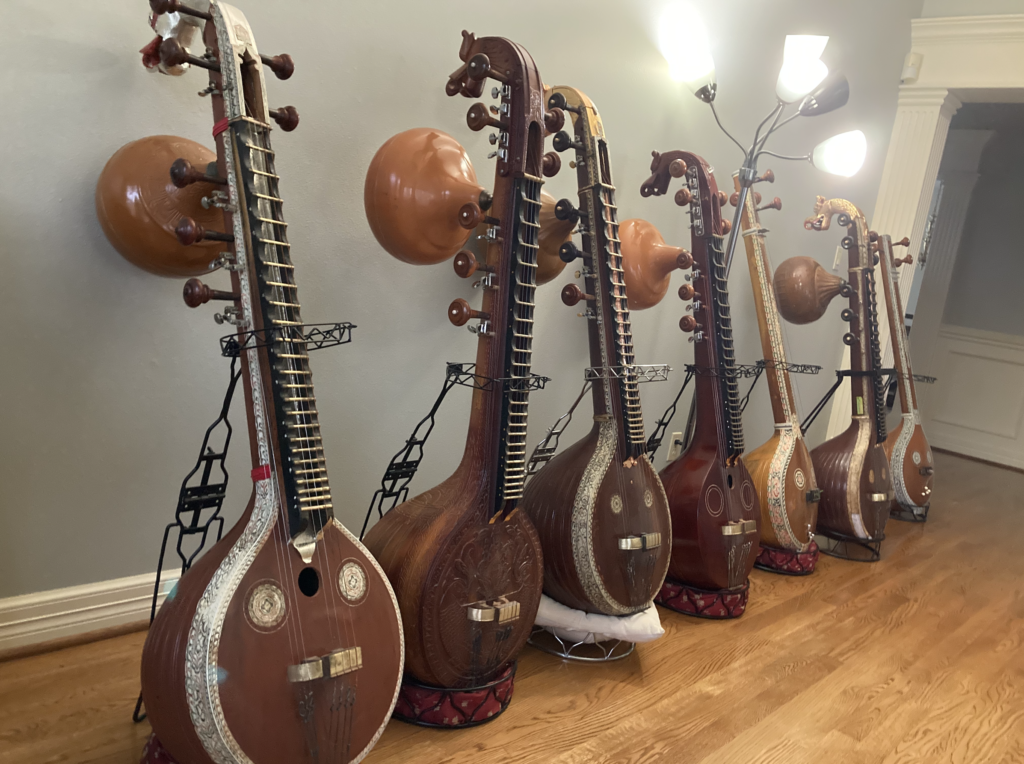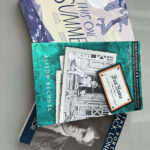Carnatic music, which emerged in the 12th century AD, is the primary form of Indian classical music in South India. It is played using a wide variety of instruments, including the tambura, veena, flute, violin, ghatam, mridangam and voice. It is typically performed in a concert setting with one main musician, an accompanying musician and one or two percussion instruments.
Both of my parents are Carnatic musicians and students, and I began taking Carnatic vocal lessons from their teacher when I was four or five. At age six, I picked up the Saraswati veena, a South Indian seven-stringed instrument. I had a mutual understanding with my parents; if I held onto some part of Indian culture by practicing Carnatic music, they would be happy. So initially, I practiced because I had to.
But in the last 12 years, Carnatic music has morphed from an extracurricular activity into an integral part of my artistic and musical voice. My veena is a source of comfort, a channel to express myself and my emotions.
However, I also practice Western choral and folk music, which brings up an interesting conundrum. I feel a strong sense of duty to preserve the incredible musical tradition of Carnatic music, but I’m also passionate about Western music theory, songwriting and singing in choir. In fact, I often find myself choosing to practice Western music over Carnatic — and feel guilty because of my preference.
But I think this urge is natural for a couple of reasons, especially for people like me who are learning music native to their country of origin while growing up elsewhere. Firstly, there’s an audience for Western music here, which makes it much easier to share. There’s no need for me to explain how my instrument works, what language I’m singing in or how the music system differs from the Western system. I don’t have to worry about whether people will like what I’m playing, because they’re used to it. There’s no burden of representing hundreds of years of cultural history. Western music is meant for the American audience — it’s culturally appropriate.
Other than myself, the only high school student at NWA who plays the veena is junior Siddharth Muralidaran. He began learning at the age of eight, and experiences a similar challenge: He enjoys both veena and guitar, which he began learning in fifth grade, but struggles to find a way to share Carnatic music with his peers.
“I enjoy Western music, and I enjoy Carnatic music, but they’re different types [of enjoyment],” says Muralidaran. “I’m more comfortable playing Western music around my friends because I know they’ll understand it — I know they’ve heard it before. But for Carnatic, I’d be less inclined to do so because I’m more wary of their judgement.”
That struck close to home for me. Though I have often endeavored to share my veena playing with my community, it’s always with a certain trepidation. After all, it’s unfair to expect an audience to enjoy something they don’t comprehend.
There is also a language barrier that comes with Carnatic music. Because the art form is practiced across several states in South India, compositional repertoire are written in multiple languages, including Tamil, Telugu, Sanskrit, Kannada and rarely Malayalam. I am semi-fluent in Tamil, my parents’ mother tongue, but the dialect used in most compositions is too formal for my comprehension. Additionally, the subject matter generally centers on religious worship and praise, which don’t always resonate with the younger generation, whether in India or elsewhere.
Although my grandparents are practicing Hindus, my parents have never pushed me to believe, which I appreciate greatly. If the religious aspects of Carnatic music are foreign to me, even more so are the numerous traditions of religious worship and ceremony that occur throughout the year. My blissful ignorance of the lyrics lets me enjoy Carnatic music without concerning myself about the religious meaning of the words.
Muralidaran finds that he circumvents the obstacle of language in a similar way. He also tries to focus on the melodic aspect of the music, both in Carnatic and Western music.
“When you’re listening to music, you get the feeling of the song from the tune that you’re hearing,” says Muralidaran. “For lyrics, you have to focus to understand what [the artist is] saying, but with tune it’s a lot more natural to pick up [the] emotions you’re trying to convey.”
Muralidaran reflects that his deep connection with melody possibly influences his current preference for guitar instrumental music and continues his love for the veena.
“That’s one aspect of Carnatic music, veena playing especially — there are lyrics, but veena playing delves so deeply into how the music sounds,” says Muralidaran.
I’m also drawn to Western music because a major part of my musical experience relies on songwriting. Unfortunately, the language barrier prevents me from writing music in the Carnatic system, as English (my only truly fluent language) is not conducive, with its diphthongs and hard r’s. As a result, I’ve written a lot of songs in Western folk — because I can say what I want to say.
But still, there is a sense of obligation that comes with practicing a traditional art. You can’t be the one to let it die. If there is one thing Muralidaran and I agree on, it’s that the tradition of Carnatic music must be continued.
“We start by introducing [people to Carnatic music],” says Muralidaran. “Make it mainstream that this type of music exists. You can listen to it whenever you want — here are some songs, here are some artists. It’s important, right? This type of music only exists in a very small fraction of the world.”
Muralidaran is absolutely correct. Carnatic music has to adapt to the same platforms as Western music in order to reach people. Expecting audiences to sit through three-hour concerts is no longer feasible. There are a whole host of new media on which to make Carnatic music accessible, like Spotify, YouTube, Apple Music and even TikTok.
As Muralidaran says, making it “mainstream” is imperative — making songs and artists accessible on popular listening platforms, creating a social media presence for it, supporting local showcases of artist performances — all of this is essential to preserving Carnatic music and sharing it with the people around us.





Leave a Reply